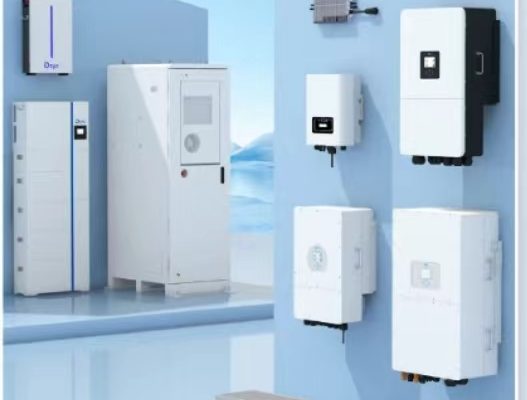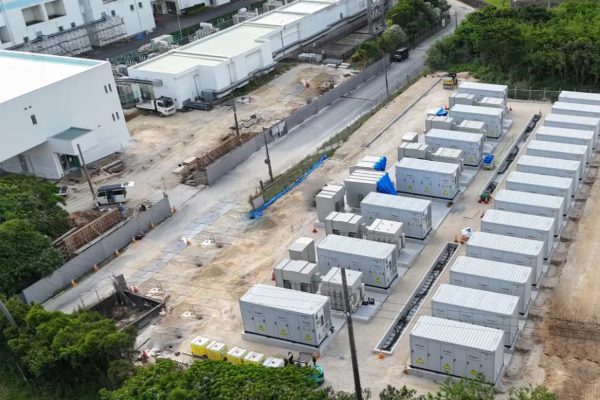What You Need to Know for Smooth Integration in Small-Scale ESS Projects
In a residential or small C&I energy storage project, performance and reliability don’t just come from choosing the right inverter or battery — they depend on how well those components communicate. And that communication happens through control protocols like RS485, CAN, and Modbus.
If you’re a system buyer, installer, or technical trader supporting small-scale projects, understanding these protocols helps you:
- Avoid compatibility issues between devices
- Ensure accurate battery status reporting and control
- Enable remote monitoring and updates
- Reduce troubleshooting time during commissioning
This article introduces the three most common protocols used in inverter and battery integration: RS485, CAN, and Modbus — including what they are, how they differ, and where each is typically used.
Why Do Control Protocols Matter?
Let’s say you’re installing a 5kW hybrid inverter with a 10kWh lithium battery. The inverter needs to know:
- The battery’s state of charge (SOC)
- Voltage, current, and temperature
- Maximum charge/discharge limits
- Faults or protections triggered by the BMS
This real-time data exchange only works if the inverter and battery speak the same protocol, and if they’re using compatible register maps.
Without good communication, the system might:
- Fail to charge/discharge correctly
- Trip into protection mode unnecessarily
- Report wrong SOC to the user
- Suffer from degraded performance or even damage
1. RS485 – The Universal Legacy Protocol
What it is:
RS485 is a physical layer standard (hardware-level) for serial communication. It’s been used for decades in industrial automation, including solar inverters.
Key Features:
- Simple two-wire differential system
- Supports multi-drop (1 master, many slaves)
- Max cable length: ~1200m
- Data rate: up to 10 Mbps (typically 9600–115200 baud)
Where it’s used:
RS485 is not a language, but a transmission method. Most Modbus RTU implementations use RS485 as their physical layer.
You’ll often see RS485 ports on:
- Hybrid inverters
- Lithium battery BMSs
- Charge controllers
- Monitoring boxes or loggers
Pros:
- Widely adopted
- Cheap and easy to wire
- Works over long distances
- Stable in noisy environments
Cons:
- Requires correct wiring (A/B polarity)
- Point-to-point or single-master bus
- Slower than newer alternatives like CAN
- Protocol must be defined separately (e.g., Modbus over RS485)
2. CAN – Fast, Safe, Battery-Focused
What it is:
CAN (Controller Area Network) is a robust, high-speed communication protocol originally developed for automotive use. It’s now widely used in lithium battery packs and smart energy systems.
Key Features:
- Differential 2-wire system
- Broadcast-based (multi-master capable)
- Up to 1 Mbps speed
- Supports error checking and priority arbitration
Where it’s used:
CAN is the most common protocol for lithium BMS–inverter communication, especially in modern systems with LFP or NMC chemistries.
Used in:
- High-voltage and low-voltage battery packs
- Hybrid inverters
- Industrial BMS systems
- Electric vehicles
Pros:
- Fast and stable
- Efficient — only transmits needed frames
- Great for dynamic battery control
- Standard for many battery brands
Cons:
- Protocol versions vary between manufacturers
- Requires matching CAN IDs and message structure
- Shorter range than RS485 (~40m typical)
Watch-out:
Not all CAN-enabled devices use the same CAN protocol structure. Always confirm if the inverter supports your battery brand’s CAN protocol, or if custom integration is needed.
3. Modbus – The Language Over RS485
What it is:
Modbus is a communication protocol that works over various physical layers, most commonly RS485 (Modbus RTU) or TCP/IP (Modbus TCP).
Key Features:
- Master-slave model
- Uses register-based data mapping
- Open protocol, many vendors use it
- Can be implemented in controllers, PLCs, monitoring platforms
Where it’s used:
- Data exchange between inverter and EMS/BMS
- Monitoring systems pulling data from multiple inverters
- Grid operators reading from local smart devices
Pros:
- Standardized and well-documented
- Easy to implement with PLCs and SCADA systems
- Compatible with industrial software and gateways
Cons:
- Register maps vary between manufacturers
- Needs polling, slower than event-driven systems like CAN
- Limited error handling
- Often requires setup tools to define registers and baud rates
Which Protocol Should You Use?
| Use Case | Recommended Protocol |
|---|---|
| Lithium battery ↔ hybrid inverter | CAN (if supported) |
| Battery monitoring system ↔ controller | RS485/Modbus RTU |
| Multiple inverters ↔ central logger/EMS | Modbus TCP or RTU |
| Small off-grid project with open BMS | RS485 (custom map) |
| Rapid BMS control with error detection | CAN |
Important:
Always check the protocol compatibility list provided by the inverter or battery manufacturer. A battery that supports CAN may not work unless the inverter also supports that exact CAN map version.
Real Project Example: 5kW Hybrid Inverter + LFP Battery
- Battery: 48V, 10kWh LFP with CAN
- Inverter: 5kW hybrid, supports both CAN and RS485
- Communication: CAN connected directly
- Result:
- Real-time SOC and current control
- Smooth charge/discharge switching
- Auto-shutdown on fault signal from BMS
- Zero manual parameter setting needed
Without CAN support, the same system would require:
- Manual charge/discharge current limits
- Relay-based protections
- Risk of overcharge or under-voltage
What to Look For When Sourcing
When evaluating a hybrid inverter or battery, check:
✅ Does the inverter support both CAN and RS485/Modbus?
✅ Is the battery protocol certified for the inverter brand?
✅ Can the BMS send fault signals to the inverter?
✅ Are there firmware updates available to support more brands?
✅ Is documentation (register list, CAN map) available?
You can also ask suppliers if they offer pre-integrated kits with proven communication — especially for smaller installations.
Summary: Communication Defines Control
Whether you’re designing a small home ESS or supplying kits for off-grid communities, knowing your inverter’s communication protocols is essential. A mismatch in RS485/CAN setup can ruin an otherwise good system.
Here’s a quick summary:
- RS485 is common, simple, and compatible with Modbus — great for monitoring.
- CAN is fast and battery-focused — ideal for real-time control and modern lithium systems.
- Modbus is flexible and industrial — but requires setup and register mapping.
As a project buyer or technical partner, asking the right protocol questions up front can save days of troubleshooting later. It’s a small detail — but one that separates plug-and-play success from frustrating failures.









